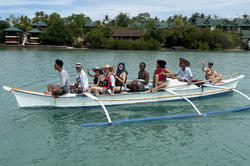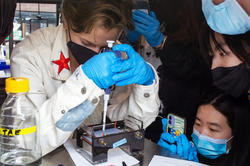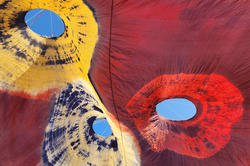Students make cross-cultural connections and take a deep dive into fundamental concepts of truth and beauty, manga and Indigenous Filipino arts traditions.
Students Explore New Ways of Making Via RISD Global Summer Courses
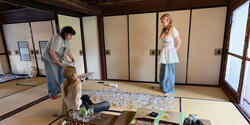
RISD students who recently took part in RISD Global summer study courses will bring a fresh set of perspectives and ideas to their upcoming fall studies after exploring cities and historical sites across Italy, Brazil and Japan.
“Students stepped outside of their comfort zones to explore new ways of engaging with the world,” says RISD Global Director Sarah Croft. “The goal of travel courses is to extend the school’s curriculum in a natural and meaningful way by working with faculty leaders, campus collaborators and overseas hosts who offer their kindness and expertise so generously.”
Printmaking department faculty member Dan Wood 94 PR led a course in Italy called Letterpress Letterscape Rome. Students explored the basics of letterpress printing, the evolution of Roman and Western letterforms, and how the related techniques were lost and found again over the centuries. To deepen their learning, they visited museums, libraries and archives such as Istituto Centrale per la Grafica, Biblioteca Angelica and Centrale Montemartini. While learning how to use letterpress printing as a form of expression, the group collected type samples—graffiti, rubbings and photographs—to create work for a final exhibition in Rome.
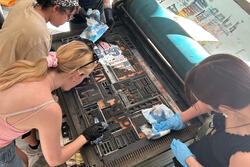
“To come to a city like Rome, where there are thousands of years of history overlaid and intersecting with each other, is a humbling gift to experience,” Wood said. He joked about the exceptional coffee in Italy and noted that “it was truly amazing to see how deeply the course and experience affected students’ perspectives.”
Down in the southern hemisphere, students in the course Adaptive Reuse + Lina Bo Bardi – Brazil learned about feminist and non-Western practices of making in architecture and design. Led by Assistant Professors of Architecture Debbie Chen and Stephanie Rae Lloyd, the group explored adaptive reuse—the practice of rehabilitating existing buildings that are no longer able to function as designed while retaining their cultural identity and memory.
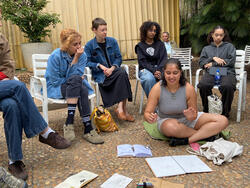
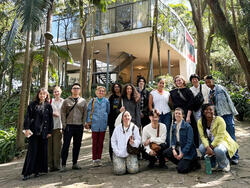
Lina Bo Bardi, the course’s namesake, was an Italian-born Brazilian architect whose work combined a modernist sensitivity with a commitment to preserving language and a design process guided by social responsibility. “Today, Lina Bo Bardi is considered one of the most prominent and consequential modernist architects, and her body of work is appreciated for its ability to reflect the common, the vernacular and the artisanal as an intrinsic part of a contemporary culture,” Chen and Lloyd noted in the course syllabus.
Trips to Bardi’s archives, the São Paulo Museum of Art and Teatro Gregório de Mattos were just a few of the stops throughout their adventures. Students developed personal dossiers based on their visits to Bardi’s adaptive reuse projects across São Paulo and Salvador de Bahia. They included written notes, urban maps, material swatches, sketches and site documentation.
Meanwhile, students in the course Looking At, Looking Through, Looking Back: Glass as an Intervention of Existing Architecture in Japan studied the idea of utilizing glassmaking to challenge traditional Japanese architecture.
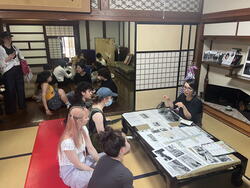
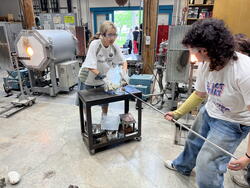
In addition to working in the hotshop at the Akita University of Art and installing at Matsukura House in Akita City, the group took day trips on the weekends to nearby towns of Yurihonjo, Kakunodate and the Oga Peninsula to view architectural sites, local museums and cultural spaces. The students submitted daily reflections about how glass was used in their surroundings and how it influences the experience of people entering the space. The group’s work was featured on local news stations in Akita during their visit.
The course was led by Associate Professor of Glass Sean Salstrom MFA 06 GL and Architecture department faculty member Junko Yamamoto. “This was an exciting opportunity for members of the RISD community to experience living and working in Japan,” Salstrom said. “I hope the students take away a broader understanding of the world and new ways of making and communicating through making.”
Kaylee Pugliese / Top image: Students lay out glass pieces in Japan
August 4, 2025
